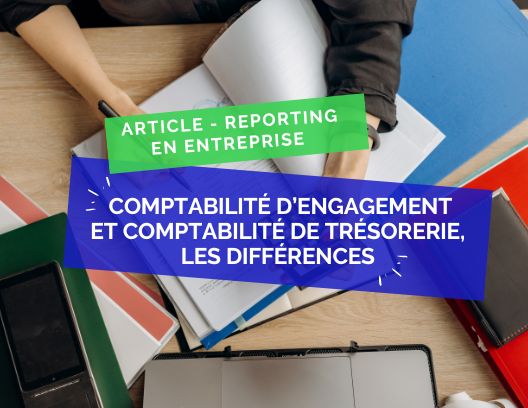The quality of financial information in business
•
Jul 8, 2024
Management control relies on a quantified measurement of the company’s activity and then on an analysis to draw conclusions and make decisions regarding the strategy to adopt. In this mode of operation, the quality of the information used is of utmost importance. When the strategy is based on data, its quality mechanically influences the relevance of the strategy. However, according to BlackLine, 2/3 of financial executives believe they have made a decision based on erroneous data. This alarming figure underscores the shortcomings of companies regarding the accuracy of their financial data, and their vulnerability to frequent errors.
Financial information, a key resource
Financial data must be accurate and up-to-date to prevent potential legal and strategic problems. First of all, it goes without saying that erroneous data poses problems from a fiscal perspective. Indeed, the obligation to maintain up-to-date accounting requires verified and reliable information on the accounts. Furthermore, incorrect information can lead to rising costs and inefficiencies. Moreover, if the company adopts a management approach based on financial indicators, their accuracy becomes vital for decision-makers. Poor information upstream will consequently provide a distorted indicator. From there, the reader of the dashboard will necessarily draw a wrong conclusion regarding the reality of the activity. Specifically, these data errors occur in half of companies, also according to BlackLine, and require a week of corrections from the teams. For a restaurant, for example, an error in reporting the costs of raw materials will result in false margins.
Identifying the factors decreasing the quality of financial data
The first step in solving the issue of poor quality financial information is to identify error factors. These are numerous and are primarily due to the size of the company. A large establishment indeed has a higher chance of having multiple collaborators responsible for a part of the reporting. While the multiplicity of sources is useful for data completeness, it mechanically increases the risk of error. Moreover, a wholly manual reporting process, with a shared spreadsheet filled out by collaborators as they go, heightens this risk. Finally, beyond the multiplicity of agents, a complex proofreading chain is also a risk factor. In fact, each proofreading, each check or modification of the data by a link in the financial chain is an opportunity to make a mistake.
Towards an organization ensuring information quality
Once the factors decreasing the quality of financial information are identified, a solution is possible. Firstly, a reorganization of the accounting chain is a good response to the problem. This may involve rethinking the process “top-down,” ensuring several criteria are met. Among these criteria, the number of data points to be entered by a collaborator and the presence of correction systems are two aspects to prioritize. A good financial information chain will rely, among other things, on mandatory proofreading at multiple levels. In the case of a restaurant, it is for example conceivable to have the figures entered by the cash manager rechecked once by the accountant. Additionally, sending discrepancies back to them can constitute a policy capable of enhancing overall quality. Finally, establishing a quality indicator for financial data is also a solution. Tracking the evolution of the number of errors may be the most effective way to raise awareness among the teams and improve the quality of financial information.
The software solution
Better management control software allows for reconciling a great diversity of sources with certain quality. Indeed, by making data entry automation possible, the tool reduces the risk of input errors. Furthermore, an account system also decreases this risk by limiting the amount of information accessible to each person. Finally, its integrated proofreading system with validation increases the chances of correcting potential false data.
In summary:
Management control relies on a quantified measurement of the company's activity and an analysis to make strategic decisions. However, the quality of the information used is crucial for the relevance of the strategy. According to BlackLine, 2/3 of financial executives have already made a decision based on erroneous data.
Financial data must be accurate and up-to-date to avoid legal and strategic problems. The factors decreasing the quality of financial data include the size of the company, a manual reporting process, a complex proofreading chain, and a multiplicity of sources.
A reorganization of the accounting chain, mandatory proofreading at multiple levels, and a quality indicator for financial data can help improve the quality of financial information. Management control software can also assist by automating data entry, limiting access to information, and integrating a proofreading system with validation.
F.A.Q:
1. Why is the quality of financial information important for management control?
The quality of financial information is important for management control because it influences the relevance of the company’s strategy. Erroneous data can lead to legal and strategic problems, as well as rising costs and inefficiencies.
2. What are the factors decreasing the quality of financial data?
The factors decreasing the quality of financial data include the size of the company, a manual reporting process, a complex proofreading chain, and a multiplicity of sources.
3. How to improve the quality of financial information?
To improve the quality of financial information, a reorganization of the accounting chain, mandatory proofreading at multiple levels, and a quality indicator for financial data can be implemented. Management control software can also help by automating data entry, limiting access to information, and integrating a proofreading system with validation.


